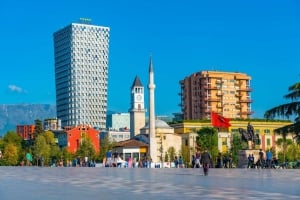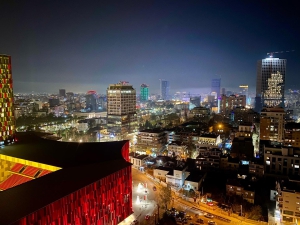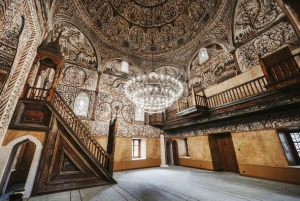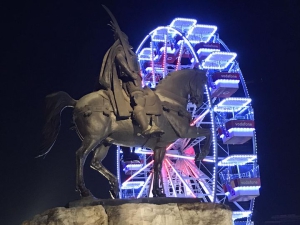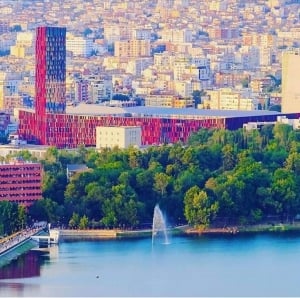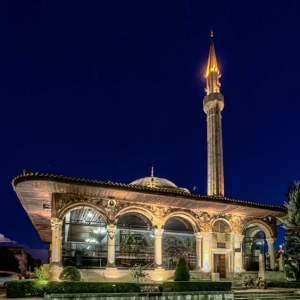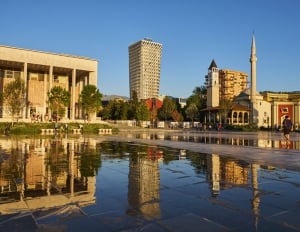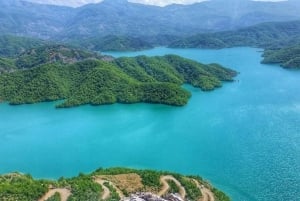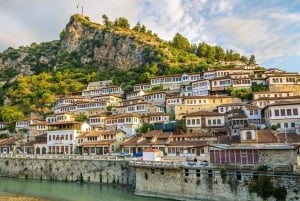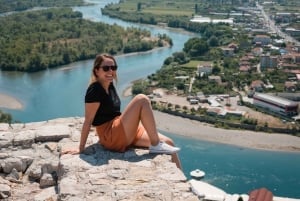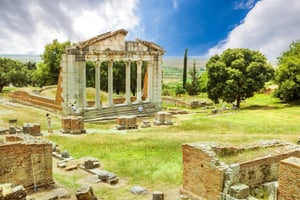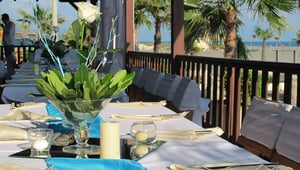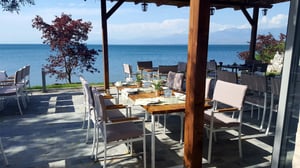Tirana
Tirana, the capital with “The Red Plums”
Tirana, the capital of “The Red Plums”
The capital of Albania, Tirana, was founded in 1614, and for the first time the name of Tirana is mentioned in 1418 in a Venice document. Tirana is the largest city in Albania and is located only 17 km from the airport "Mother Teresa", the only international airport in Albania.
On the sidewalks of one of the main streets of the capital, there are planted the red plums that offer a fantastic view. With the arrival of the spring, you can take an impressive walk in the tunnel created from the flowers blooming so happily from these trees. You should definitely capture these fantastic views with your cameras or you can enjoy a coffee in the noisy bars along the boulevard with "the red plums".
Antiquity and modernity…so close to each other
The center of the capital offers you both antique and modernism. The first thing you will notice is the Clock Tower that shows the clock of Tirana since 1822. You can climb 90 degrees and reach the top of it, from where you can enjoy a wonderful view of Skanderbeg Square. The Clock Tower together with the Et'hem Bey Mosque create a unique architectural ensemble.
The Et'hem Bey Mosque, which began to be built around 1793, has a magnificent architecture, decorated with murals from the oriental tradition. The frescoes of the mosque that reflect trees, fountains, bridges and quiet nature are so rare for the Islamic art. This mosque is one of the few that survived the communist violence campaign during which many religious institutions were demolished or turned into warehouses and gyms. In 1991, during anti-communist movements, about 10,000 people entered the mosque with flags in their hands. This marked at the same time the fall of communism and the rebirth of religious belief in Albania.
Visiting this cultural monument will be an unforgettable experience on your trip.
The National Gallery of Arts was built in 1946 and has an exhibition area of about 5300 m². There is Renaissance Art, Byzantine Art halls, Graphic Arts halls and works made after the ‘50s to be found there. The Art Gallery preserves about 4100 works of art by Albanian and foreign authors, which include a period that begins from the 13th century and continues to the present days.
The National Historical Museum was built in 1981 and is the largest in Albania. There are about 4750 objects in the museum premises, which belong to a relatively long period of time, starting from the IV millennium BC until the second half of the XX century. The museum, through its eight pavilions reveals important parts of history starting from the ancient period. A masterpiece preserved in this museum is the "Beauty of Durres" mosaic, belonging to the IV century BC.
Retrospective of the communist period
Built in the 1980s, under the foundations of the Interior Ministry, the tunnel was one of the most important links in the paranoid bunker project of the country by the communist dictatorship. Located somewhere in the center of Tirana, the underground shelter was kept secret for a very long time, until it was discovered in 2015.
Bunk’Art, almost 1000 square meters in size, is the second anti-nuclear bunker in Tirana, which has already turned into an interactive art experience. The journey inside this tunnel creates the opportunity to get acquainted with the pathology of isolation and paranoia of a 45-year period. Each of the 24 chambers tells a piece of history about the political persecution of some 100,000 Albanians during the period '45 -91.
Another attraction not to be missed is the building that briefly housed the Gestapo during the invasion of the country in World War II and which later became the Secret Service Headquarters of Albania, 1944 -1991.
This building has been turned into the National Museum of Eavesdropping, which aims to tell you about one of the darkest periods in the country's history. It is also called the "House of Leaves" because of the dense vegetation that this building was surrounded with.
The Pyramid was built with the idea of a unique museum in 1988, three years after the death of dictator Enver Hoxha. Absolutely it is an important tourist attraction, as it is a symbol of the infamous communism. The name "Pyramid" was taken by students in December 1990, during the uprising to overthrow communism, because of its architectural form, but also because of its connection as a symbol with the dictatorship.
Later it served as a conference and fair center, and today while awaits reconstruction it has become a clandestine place for amateur murals. It is impossible to visit Tirana and not take some photos in front of this unique building
updated


